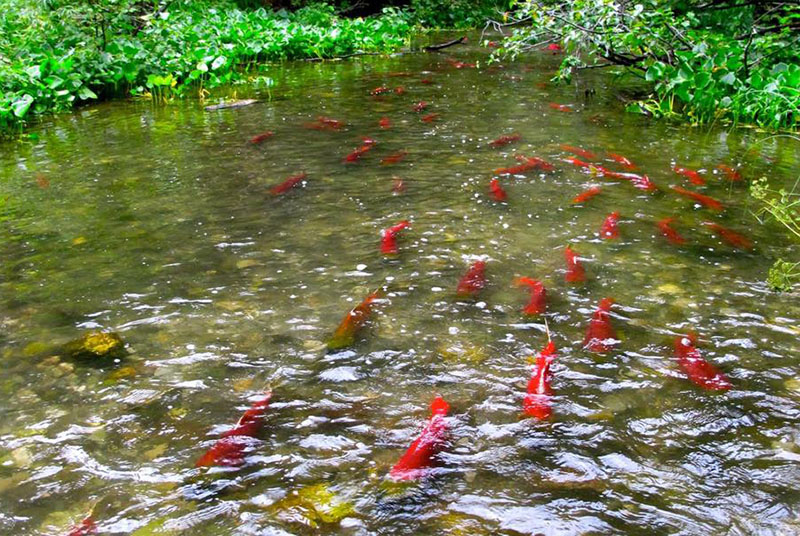Fewer pinks again this year; sockeye catch tops 50 million
Alaska’s salmon season is winding down and while catches have made the record books in some regions, the statewide take will fall a bit short of the 204 million fish forecast.
“We are within about 10 percent of the forecast, so that’s very positive and overall it’s been a pretty good season,” said Forrest Bowers, deputy director of the commercial fisheries division of the Alaska Department of Fish and Game.
The statewide salmon catch through Friday topped 191 million fish. The shortfall, Bowers said, again stems from the arrival of fewer pink salmon.
“We were expecting a harvest of about 142 million, right now it’s at 114 million. We’re probably not going to catch another 30 million pinks between now and the end of the season,” he said.
Still, the “bread and butter” catches are far better than last year when pink returns were so dismal, it prompted a disaster declaration by Governor Walker.
This summer’s humpy haul at the three prime producing regions all are within the lower ends of the forecast ranges with Southeast’s take so far on its way to 28 million, Kodiak at 19 million and Prince William Sound nearing 42 million pink salmon (humpback whale predation is being blamed on lower pink salmon catches there).
One big pink winner this year, Bowers said, is the Alaska Peninsula which had a “spectacular season.”
“Their pink harvest (nearly 19 million) and chum catch (nearly 2 million) will end up in the top five on record,” Bowers said. “And the Peninsula sockeye harvest (7 million) is going to the second or third largest ever.”
“We are within about 10 percent of the forecast, so that’s very positive and overall it’s been a pretty good season.”
— Forrest Bowers, Alaska Department of Fish and Game
It will be sockeyes that help offset any number shortfalls this season with a statewide take of about 52 million, of which nearly 37 million came from Bristol Bay.
“It is the 10th time in history that we’ve harvested over 50 million sockeye salmon,” Bowers said. “Catches for the previous two years also topped 50 million, but prior to that, you had to go back to the mid- to late 1990s to see such a large sockeye harvest.”
Perhaps the biggest salmon surprise this year was the huge returns of chum salmon across the state. The catch to date of 21.2 million chums is just shy of the all-time record of 24 million fish set in 2000.
“It’s one of the six times we’ve ever harvested over 20 million chums. That was a surprise. We didn’t expect that at all,” Bower said, adding that coho catches are also stronger than usual.
Salmon fishermen way out west also are enjoying some of the best returns ever.
At Norton Sound, catches of chums and cohos (over 300,000 combined) are among the top 10 of all times. At Kotzebue, the chum fishery has topped 400,000 for the second year in a row and could rank as the sixth best in the 56 year history of the fishery.
On the Yukon River, a catch of more than one million chum salmon have been taken so far, with the best fall catches in history.
The Yukon also has seen the biggest king salmon returns since 2005.
Salmon even appeared at Barrow where locals were able to pack their freezers with a mix of chums, pinks and kings.
“That’s a relatively new phenomenon,” Bowers said. “We don’t have any assessment projects to monitor up there, but it’s pretty exciting. That would be a range extension potentially for some species and it will be interesting to hear if those have established themselves as spawning populations or if it’s just a few strays that wandered up there.”
The only westward region that was a total bust was at the Kuskokwim River where enough sockeyes and coho salmon returned to allow for harvest opportunities, but no buyers meant no fishing.
Another big salmon downer this year was the unprecedented and complete closure for king salmon in Southeast Alaska, the largest producing area. Catches there totaled just 165,000 fish; the statewide king salmon take stands at 244,000.
Bowers said it’s too soon to predict a total dockside value for the 2017 salmon catch, but with higher prices across the board, it will certainly eclipse the 2016 value of $406 million. Preliminary totals for the 2017 salmon season will be released in November.







